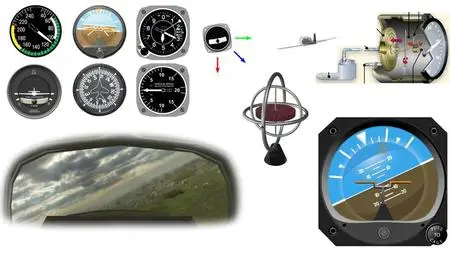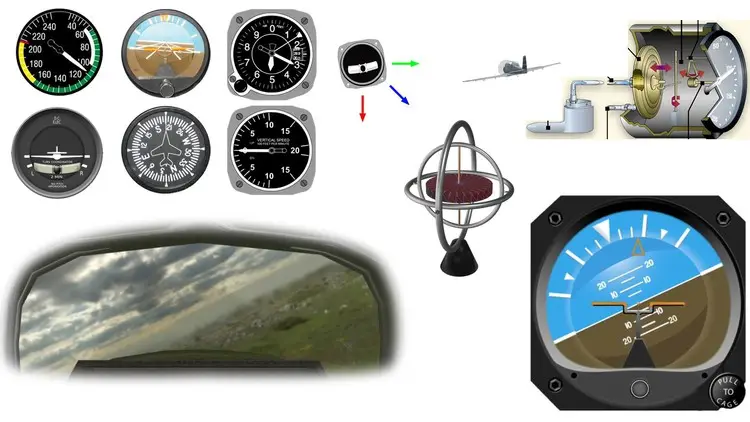Flight Instrument Essentials
Duration: 1h 1m | .MP4 1280x720, 30 fps(r) | AAC, 44100 Hz, 2ch | 1.25 GB
Genre: eLearning | Language: English
Duration: 1h 1m | .MP4 1280x720, 30 fps(r) | AAC, 44100 Hz, 2ch | 1.25 GB
Genre: eLearning | Language: English
Learn the essential elements of aircraft instrumentation.
What you'll learn:
Categories of aircraft insrumentation.
Standard layout of aircraft instruments.
Categories and layout of flight instruments.
Pitot-static system and instruments.
Function of pitot static instruments: altimeter, vertical speed indicator, airspeed indicator.
Gyroscopes and gyroscopic instruments.
Function of gyroscopic instruments: directional gyro, attitude indicator, turn indicator, turn coordinator.
Function of other instruments: inclinometer. magnetic compass.
Description:
Aircraft instrumentation provides information about our position, orientation, engine status, system status, and various flight parameters. They help us maintain aircraft control and situational awareness. In particular, the Flight Instruments are the instruments we use to monitor the flight state of the aircraft. They consist of seven instruments indicating parameters of interest such as airspeed, altitude, heading, and so on. In order to use the instruments effectively, it's sometimes necessary to know a little bit about how they work. This is where Flight Instruments Essentials comes in.
In Flight Instrument Essentials, we'll have a detailed look at how the flight instruments work, including physical principles, power sources, and display interpretation. We'll look at the pitot-static system and the instruments it supports (altimeter, airspeed indicator, and vertical speed indicator). Then we'll look at gyroscopes and the gyroscopic instruments (directional gyro, attitude indicator, turn indicator, and turn coordinator). Finally, we'll look at independent instruments, including the inclinometer and the magnetic compass.
The course includes 13 videos, a comprehensive set of course-notes to support the videos, a workbook with an answer key for your practice, four quizzes for you to assess your progress, and a final exam.
At the end of the course, you'll know the inner workings, display operation, and interpretation of the flight instruments. This will provide you with a foundation for future studies covering combined instrument use in flight operations as well as recognizing and managing malfunctions.
Who this course is for:
Student pilots.
Aviation enthusiasts.
Anyone interested in aircraft.
Anyone interested in instrumentation.
More Info



